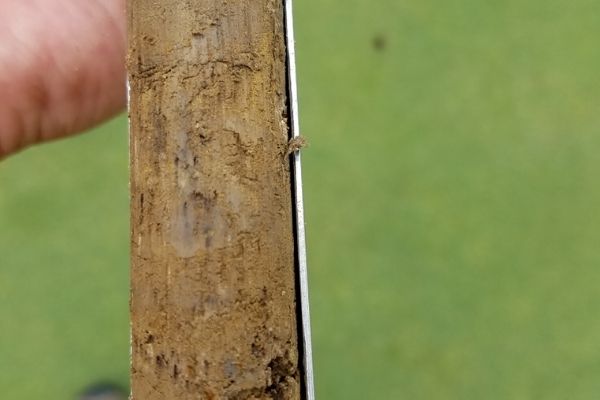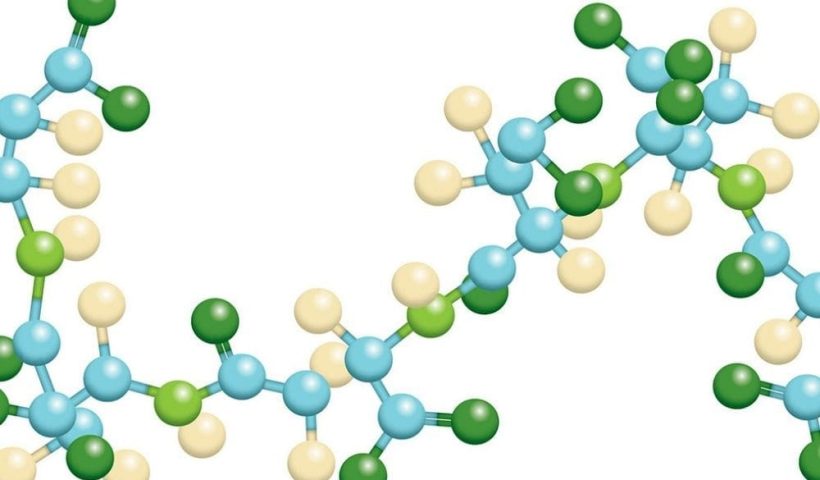
One of my favorite parts of my job is getting to make “in season” site visits with superintendents, field managers, and lawn/tree/ornamental companies. The other day, I started counting all the states I’ve made site visits to. I’ve been lucky enough to make end-user site visits in 25 states! The beginning of the season each year seems to bring recurring conversations to the forefront in these site visits. This year I find myself frequently conversing about salt.
Salt is all around us! I don’t necessarily mean Na when I say salt. What I mean is all salts: good and bad. In its simplest of definitions, a salt is simply a positive ion (cation) coupled with a negative ion (anion). This chemical compound is neutral and referred to as a salt. One fundamental example of this, in the fertilizer world, is KCl, or potassium chloride.
Most inputs we use in the green industry have a salt content to them. Whether we’re talking about plant protectants like fungicides, fertilizers, herbicides, or irrigation water, all these components have a salt content. There are various metrics we use to understand the potential issues that may come from salt content. These help direct us to use one product/input over another, or even yet, mixing multiple inputs together. A couple of examples of these metrics would be salt index for fertilizers, Sodium Adsorption Ratio and Total Soluble Salts for irrigation water, or Electrical Conductivity for soil tests. All these metrics are related to salts.
To understand that most inputs have a salt content is to understand the “silent battle of salt.” This is a constant battle that we fight through the entire season. It’s a battle of keeping water in our cells, and therefore plants. Water will flow, osmotically, from a lower concentration to a higher concentration of salt. Most inputs we deliver to our plants are external salts. They are essentially working to pull water out of plant cells. Though this usually isn’t an issue, consider this situation. In the north, on an 85 plus degree day, an application might be made with 4-7 liquid fertility products, 2-3 plant protectants, maybe an adjuvant or two, and irrigation might have been running at high levels for weeks. We don’t often think much about this. We may say that we wouldn’t spray on days of high temps and skies, but the reality is you have to play the hand you’re dealt, and those sprays still happen!
This battle isn’t only silent because we aren’t thinking about the implication of our sprays; it’s silent because we won’t always see a blatant “tip burn.” “Tip burn” is the most apparent form of salt damage, but what about when we’ve brought the plant to the brink of that “tip burn”? We can have that plant so stressed and exhibiting intense signs of abiotic stress without realizing the exact culprit(s). Many times, one of the main culprits is salt.
This isn’t just a battle of keeping water in cells either. It’s also a battle of keeping the efficacy of some products. Certain inputs can be negatively affected by the salt content of others. It’s also a battle of soil health. We all know that Na, in particular, can destroy soil structure, but what about what salt does to the microbial community of the soil?
One of the oldest forms of food preservation is salt. Salt stops microbial activity, and food spoilage is a form of microbial activity. I once had a buddy describe this scenario. Leave a piece of beef jerky and a piece of raw meat on a countertop. Come back after an extended period of time. Barring a dog eating the experiment, the jerky is likely to be there, and the microbes will be consuming the raw meat. The salt stops microbial activity.
Imagine that story but in the soil. The more salt we feed into the soil, good, bad, or indifferent, the more likely we will negatively affect our rhizosphere microbial community. It can be hard to tangibly point out salt stress or injury (outside of “tip burn”), but what is salt’s cumulative effect?
These are some of the reasons Foliar-Pak goes out of our way to combat general salt stress. For this article, I’d like to point out three ways we combat salt stress: AminoPrecise technology, Armament technology, and the general solubility of our products.
AminoPrecise is our adjective to explain getting specific with amino acids used to formulate and at what concentrations they are formulated. Many of the amino acids used within the Foliar-Pak line are osmolytes. Osmolyte is a scientific word for “good salt.” By loading these desired components into the plant, water is encouraged to flow to that higher concentration and keep our cells and plants turgid. A few examples of products with these components would be Foundation 40, CSi L, Armament K, Bio Sea S, and 1-0-15.
Armament technology is our patented, soil-based amino acid polymer technology. It helps, indirectly, with salt stress by sequestering large flushes of salts, such as urea converting too quickly in the soil to ammonium. It also helps to sequester bad salts like Na. Armament technology will grab desired cations, like potassium, and prevent them from reacting with anions, like chloride, in effect stopping the creation of a salt: KCl (mentioned earlier). In the case of potassium, it’s also an osmolyte. So, Armament helps potassium be taken into the plant and get to work, encouraging turgidity. A few examples of products with Armament are Colonise Bio, Armament P and K, Armament Concentrate, and Play-On.
Lastly, when it comes to the Foliar-Pak product line, we don’t only care about a product’s salt index. We also focus on solubility. Solubility is a product’s ability to be taken up by the plant and how quickly that occurs. It’s important to remember that plants “drink” fertilizer; they don’t “eat” it. This is true whether it’s a foliar or a soil-based product.
When a product has a higher solubility, it gets into the plant quicker. By getting into the plant quicker, efficiency increases, but it also leaves less salt outside the plant to pull water from within the plant. Increasing solubility also allows the AminoPrecise aminos, coupled with their nutrients, to get to work as osmolytes within the plant. Again, this encourages water into the plant to keep our cells full and turgid. At the end of the day, the Foliar Pak line is a “Swiss Army Knife” when it comes to the “silent battle of salt!”



